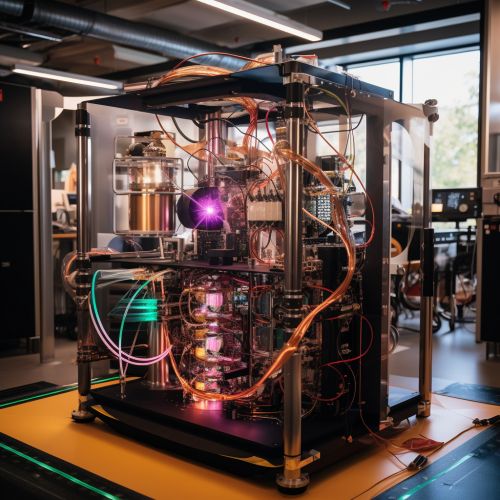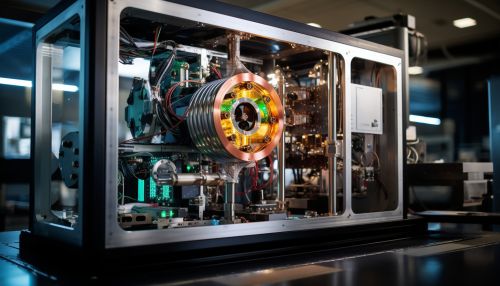Variational Quantum Eigensolver
Introduction
The Variational Quantum Eigensolver (VQE) is a quantum algorithm specifically designed for use on near-term quantum computers, i.e., quantum devices that are available today. VQE is an example of a hybrid quantum-classical algorithm, which leverages the strengths of both classical and quantum computing to solve problems more efficiently than classical computers alone.
Background
The VQE algorithm was first proposed in 2014 by Alberto Peruzzo, Jarrod McClean, Peter Shadbolt, Man-Hong Yung, Xiao-Qi Zhou, Peter Love, Alán Aspuru-Guzik, and Jeremy O'Brien. The algorithm is based on the variational principle in quantum mechanics, which states that the energy expectation value of a trial wavefunction is always greater than or equal to the ground state energy of the system.


Theory
The VQE algorithm aims to find the lowest eigenvalue (or ground state energy) of a given Hamiltonian, which is a quantum mechanical operator corresponding to the total energy of a system. The algorithm uses a parameterized trial wavefunction, or ansatz, which is prepared on a quantum computer. The parameters of the ansatz are then optimized on a classical computer to minimize the expectation value of the Hamiltonian, thereby approximating the ground state energy of the system.
The VQE algorithm is a type of quantum variational algorithm, a class of algorithms that use a parameterized quantum circuit to prepare a quantum state and a classical optimizer to minimize a cost function. Other examples of quantum variational algorithms include the Quantum Approximate Optimization Algorithm (QAOA) and the Quantum Neural Network (QNN).
Implementation
Implementing the VQE algorithm involves several steps. First, a Hamiltonian of the system of interest is defined. This Hamiltonian is typically expressed as a sum of Pauli operators. Next, a trial wavefunction, or ansatz, is prepared on a quantum computer. The ansatz is a parameterized quantum circuit that is used to prepare a quantum state. The parameters of the ansatz are then optimized on a classical computer to minimize the expectation value of the Hamiltonian.
In practice, the VQE algorithm is often implemented using a quantum software framework such as Qiskit, Cirq, or PennyLane. These frameworks provide tools for defining Hamiltonians, constructing ansatzes, and optimizing parameters, among other tasks.
Applications
The VQE algorithm has a wide range of potential applications, particularly in quantum chemistry and materials science. For example, it can be used to calculate the ground state energy of molecules, which is a fundamental quantity in quantum chemistry. This information can be used to predict chemical reaction rates, understand chemical bonding, and design new molecules and materials.
In addition to quantum chemistry, the VQE algorithm can also be applied to problems in other fields, such as optimization and machine learning. For instance, it can be used to solve combinatorial optimization problems, which are problems where the goal is to find the best solution from a finite set of possible solutions.
Limitations and Challenges
Despite its potential, the VQE algorithm also faces several limitations and challenges. One of the main challenges is the requirement for a large number of measurements, which can be computationally expensive and can lead to errors due to quantum noise. Another challenge is the choice of ansatz, which can significantly affect the accuracy and efficiency of the algorithm. Choosing an appropriate ansatz is a non-trivial task and is currently an active area of research.
Furthermore, the VQE algorithm is limited by the hardware constraints of current quantum computers, such as limited qubit coherence times and gate fidelities. These limitations can lead to errors in the algorithm and can affect the accuracy of the results.
Future Directions
Despite these challenges, the VQE algorithm remains a promising tool for near-term quantum computing. Ongoing research is focused on improving the efficiency and accuracy of the algorithm, developing better ansatzes, and extending the algorithm to new applications.
One promising direction is the development of hardware-efficient ansatzes, which are designed to take advantage of the specific features and constraints of current quantum hardware. Another direction is the use of error mitigation techniques to reduce the impact of quantum noise and other errors.
